Deepak G. Pawar's Blog, page 7
October 5, 2019
Vlog: So you want to react? Part 1/2
‘So you want to react? Watch this first!’ (Part 1 of 2) is the first part of a brief introduction to Hindi cinema (Bollywood) for non-Indian reaction-video makers.
Whether you are just curious or you want to find out more background information about Indian cinema in general and Hindi films in particular, begin by watching this video.
This video (Part 1 of 2) includes sections on languages, evolution of Hindi cinema, and songs & dances:
https://youtu.be/yBX56nH3N04
Whether you are just curious or you want to find out more background information about Indian cinema in general and Hindi films in particular, begin by watching this video.
This video (Part 1 of 2) includes sections on languages, evolution of Hindi cinema, and songs & dances:
https://youtu.be/yBX56nH3N04
Published on October 05, 2019 05:49
September 12, 2019
Vlog: Munnar
Published on September 12, 2019 07:58
September 9, 2019
Vlog: Ranathambore National Park
Published on September 09, 2019 01:41
July 18, 2019
Film ratings & reviews on IMDb
As I have said, the internet and TV have entered into holy matrimony.
Their union will be a sealed deal as soon as we are able to get rid of money-guzzling satellite dish services.
Already, this (h)App-y marriage has produced many bonny bundles of joy: Netflix India, Amazon Prime, Zee5 and Hotstar, with many more siblings to follow.
Through these apps I have gone about catching up with some of the finer films that we only get to hear about during award ceremonies, but never actually get to watch. This is apart from the usual commercial films that we have access to.
Old or new, documentaries or films, genre-based or not, Hindi, English or regional languages, they're all included in the watch-list under my profile, gruvy-muvy on IMDb.
Also find my reviews of select films under the same profile.
A rough guide to my ratings on the database goes like this:
Stars (out of 10) My reaction 5 or below What’s all the hype about this one? 6-9 This is worth seeing Perfect 10 You’re nuts for missing this!
Their union will be a sealed deal as soon as we are able to get rid of money-guzzling satellite dish services.
Already, this (h)App-y marriage has produced many bonny bundles of joy: Netflix India, Amazon Prime, Zee5 and Hotstar, with many more siblings to follow.
Through these apps I have gone about catching up with some of the finer films that we only get to hear about during award ceremonies, but never actually get to watch. This is apart from the usual commercial films that we have access to.
Old or new, documentaries or films, genre-based or not, Hindi, English or regional languages, they're all included in the watch-list under my profile, gruvy-muvy on IMDb.
Also find my reviews of select films under the same profile.
A rough guide to my ratings on the database goes like this:
Stars (out of 10) My reaction 5 or below What’s all the hype about this one? 6-9 This is worth seeing Perfect 10 You’re nuts for missing this!
Published on July 18, 2019 08:28
English film reviews: poster collage
As I have said, the internet and TV have entered into holy matrimony.
Their union will be a sealed deal as soon as we are able to get rid of money-guzzling satellite dish services.
Already, this (h)appy marriage has produced many bonny bundles of joy: Netflix India, Amazon Prime and Hotstar.
There are several others, but with these apps I have gone about catching up with some of the finer films that we only get to hear about during award ceremonies, but never actually get to watch - at least not in India.
Some of these films are old, some new, some not English, but they are all award nominees/winners or critically acclaimed.
So here's a collage of what I have caught up with. I'll keep adding to this montage as and when I see other quality films.
This also corresponds to my ratings/reviews under my profile on IMDb: gruvy-muvy
P.S.: The size of the poster is directly proportional to how highly I rate the film:
Poster size Stars (out of 10) My reaction Small 5 or below What’s all the hype about this one? Medium 6-9 This is worth seeing Large Perfect 10 You’re nuts for missing this!

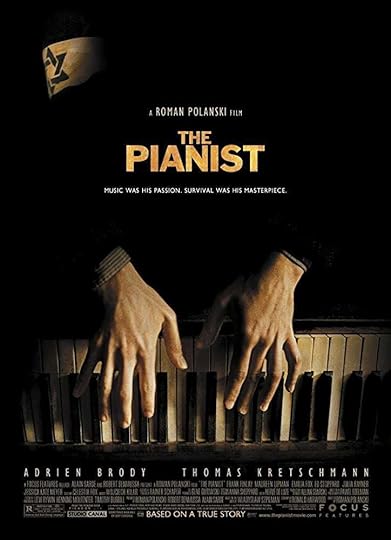

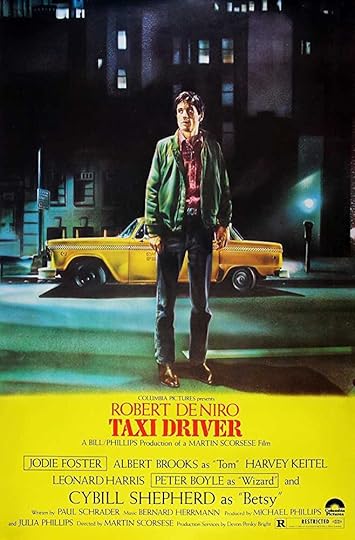



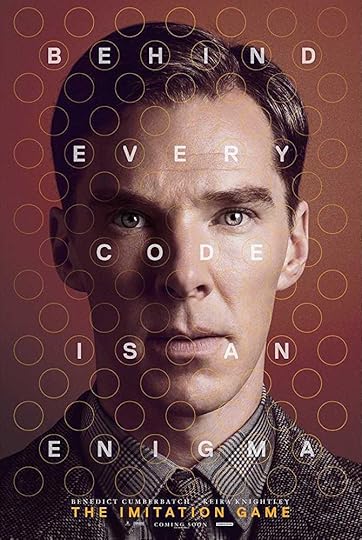




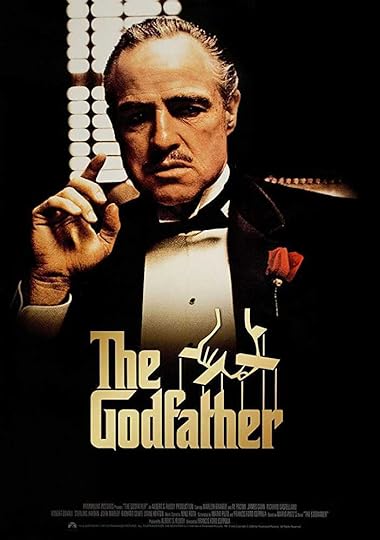
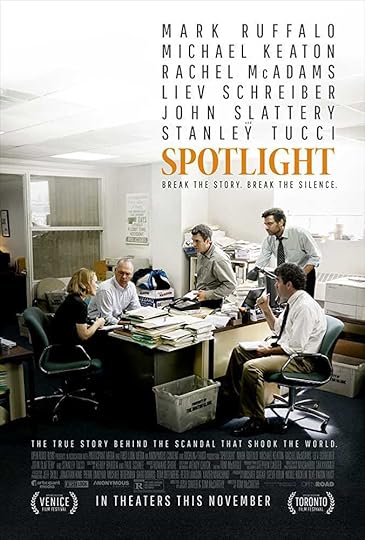







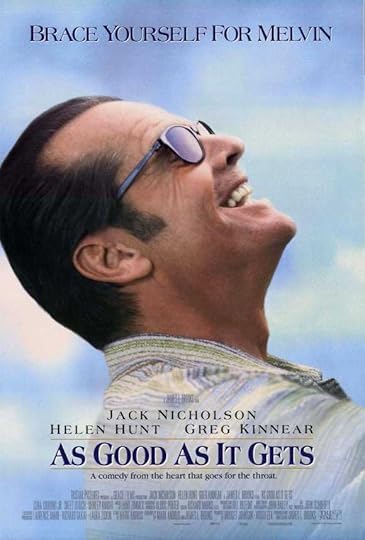

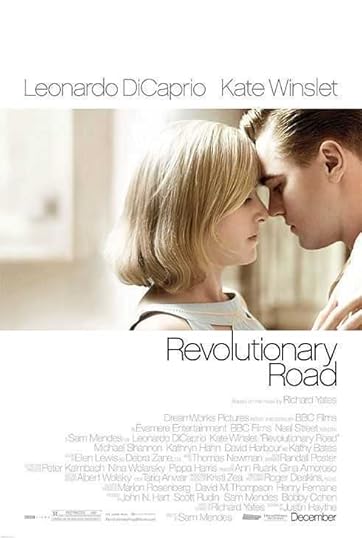

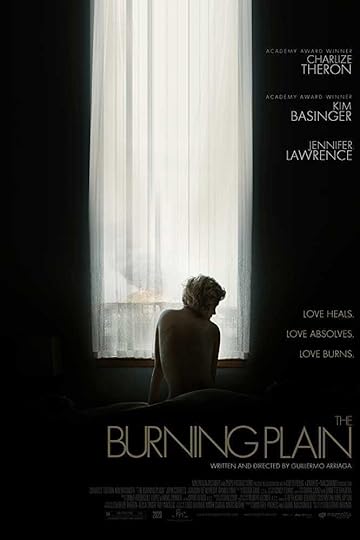



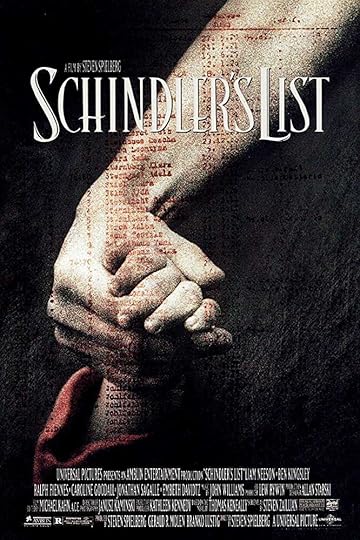


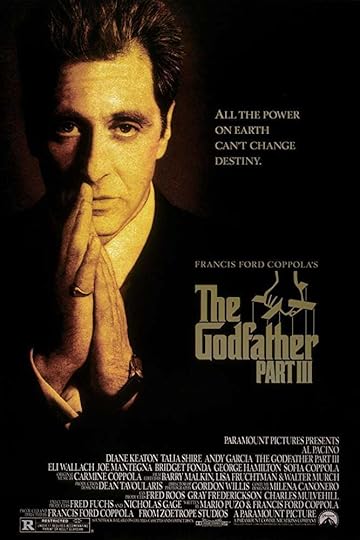

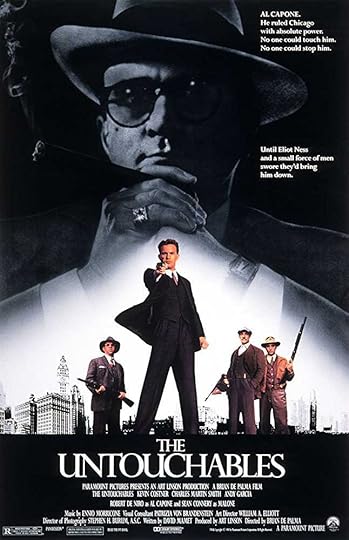
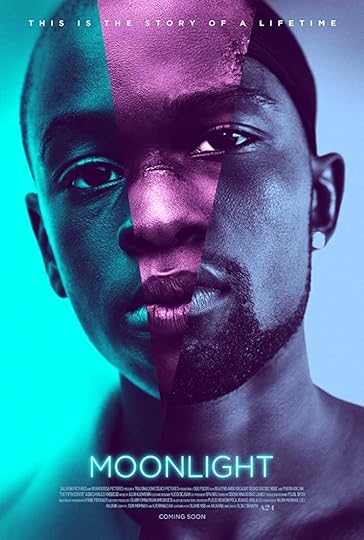
All images from Internet Movie Database website
Published on July 18, 2019 08:28
Film reviews: poster collage
As I have said, the internet and TV have entered into holy matrimony.
Their union will be a sealed deal as soon as we are able to get rid of money-guzzling satellite dish services.
Already, this (h)appy marriage has produced many bonny bundles of joy: Netflix India, Amazon Prime, Zee5 and Hotstar.
There are several others, but with these apps I have gone about catching up with some of the finer films that we only get to hear about during award cinemas, but never actually watch - at least not in India.
So here's a collage of what I have caught up with.
(The size of the poster is directly proportional to how highly I rate the film)
I'll keep adding to this montage as and when I see other quality films.
I will also add these to the watchlist on my IMDB profile: gruvy-muvy


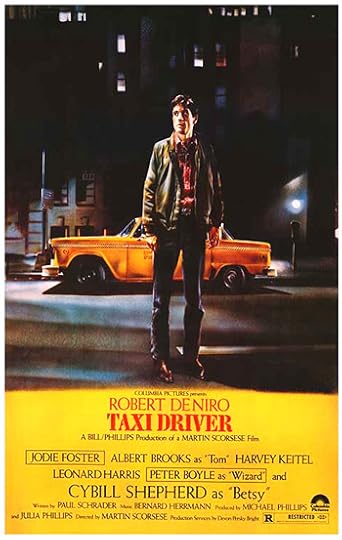



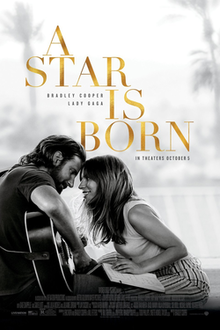


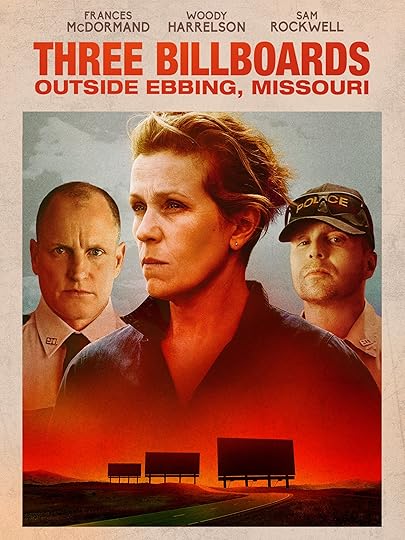

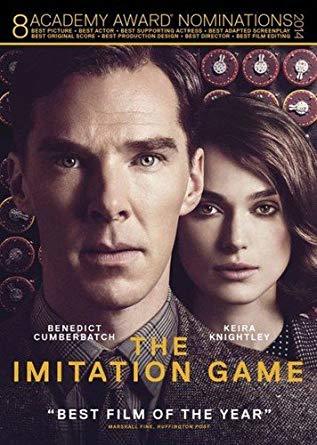

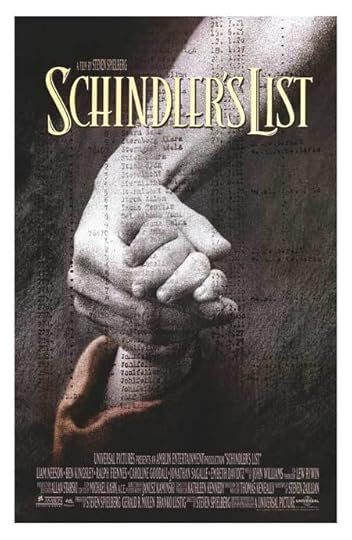
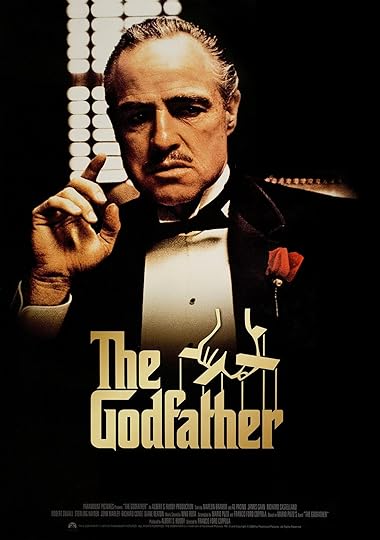
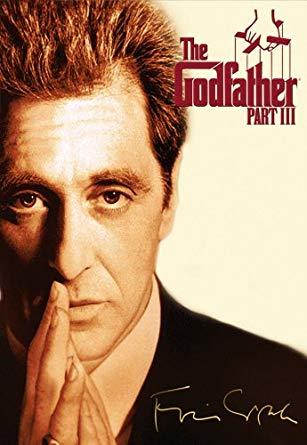
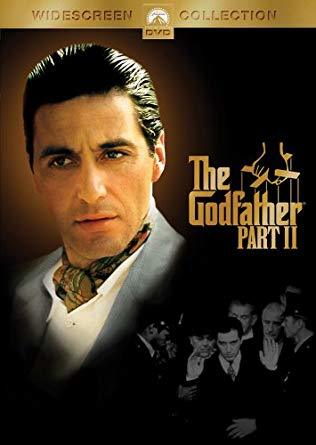
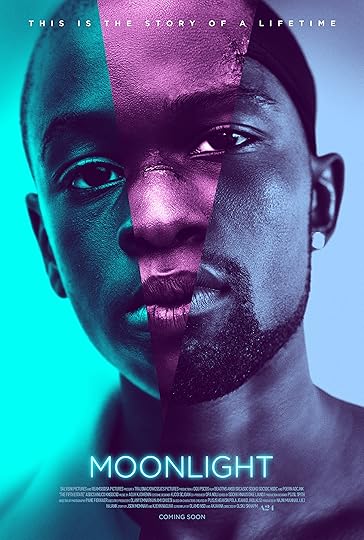

Image sources:
https://www.filmsite.org/taxi.html
https://www.imdb.com/title/tt0810819/...
https://www.amazon.com/John-Grishams-...
https://www.amazon.com/Departed-Singl...
https://www.amazon.co.uk/Three-Billbo...
https://www.amazon.com/Spotlight-Mark...
https://www.imdb.com/title/tt1800241/
https://en.wikipedia.org/wiki/A_Star_...
https://www.warnerbros.com/movies/argo/
https://www.imdb.com/title/tt0068646/
https://www.amazon.com/Godfather-Part...
https://www.amazon.com/Godfather-Part...
https://www.imdb.com/title/tt4975722/
https://www.amazon.com/Imitation-Game...
https://www.amazon.com/Schindlers-Lis...
https://www.commonsensemedia.org/movi...
https://www.movieposter.com/poster/MP...
Their union will be a sealed deal as soon as we are able to get rid of money-guzzling satellite dish services.
Already, this (h)appy marriage has produced many bonny bundles of joy: Netflix India, Amazon Prime, Zee5 and Hotstar.
There are several others, but with these apps I have gone about catching up with some of the finer films that we only get to hear about during award cinemas, but never actually watch - at least not in India.
So here's a collage of what I have caught up with.
(The size of the poster is directly proportional to how highly I rate the film)
I'll keep adding to this montage as and when I see other quality films.
I will also add these to the watchlist on my IMDB profile: gruvy-muvy



















Image sources:
https://www.filmsite.org/taxi.html
https://www.imdb.com/title/tt0810819/...
https://www.amazon.com/John-Grishams-...
https://www.amazon.com/Departed-Singl...
https://www.amazon.co.uk/Three-Billbo...
https://www.amazon.com/Spotlight-Mark...
https://www.imdb.com/title/tt1800241/
https://en.wikipedia.org/wiki/A_Star_...
https://www.warnerbros.com/movies/argo/
https://www.imdb.com/title/tt0068646/
https://www.amazon.com/Godfather-Part...
https://www.amazon.com/Godfather-Part...
https://www.imdb.com/title/tt4975722/
https://www.amazon.com/Imitation-Game...
https://www.amazon.com/Schindlers-Lis...
https://www.commonsensemedia.org/movi...
https://www.movieposter.com/poster/MP...
Published on July 18, 2019 08:28
June 9, 2019
Indian cinema arrives
As I have often surmised, the marriage between Internet and TV has almost been solemnized and the two have already given us many babies: apps that give us access to quality international, national and regional content.
What a relief from TV's old affliction: K-serials!
From among the many that I have seen recently, two offerings from Indian cinema are setting the tone for others to emulate:
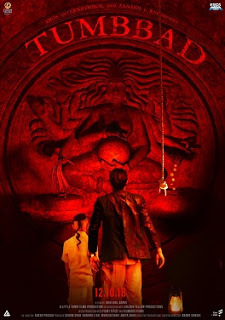
Tumbbad (2018)
and
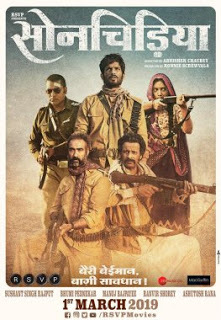
Sonchiriya (2019)
Tumbbad is all red and fiery; a superior take on mythology and greed set in an obscure rainy Maharashtrian village. The locations, cinematography, story, acting, music, production values are all first rate. It even has a moral that it delivers without being preachy. Ajay-Atul's music is exceptional, especially the title track.
Sonchiriya, a sordid tale of betrayal and tragedy among dacoits in the ravines of Chambal is gritty and hard-hitting. All the cinematic virtues I have listed under Tumbbad are applicable to Sonchiriya too.
I have to also make a special mention of Badhai Ho for taking up a bold subject and delivering it well. It's easily the best of mainstream Hindi films in 2018.
On the other end of the scale, there was that expensive turkey which I was unfortunately dragged in to watch in a multiplex, shelling out hard-earned but easily-wasted money: Zero.
Had I had my way, that's exactly the amount and time I would have spent on this thought-disordered fantasy that neither entertains nor delivers any message.
Sample this: a wheelchair bound genius cerebral palsy afflicted scientist (which in itself is an unrealistic take on Stephen Hawking since CP is associated with mental retardation), rides her wheelchair in a red wedding sari on American roads to meet her dwarf ex-boyfriend who has just won a ticket to Mars aboard a misspelt NASA rocket. 'Nuff said! Easily the worst of 2018. Can't believe they spent 200 crores on this drivel.
So, what sets apart good Indian cinema from bad? There is no secret sauce that works all the time, but comparing the above films, I could glean the following:the will and vision to execute collaborative efforts bringing together great professionals across all areas of film-making painstaking pre- and post-production work, such as script, story, screenplay, locations, production values (post-prod work in Tumbbad apparently took > 2 years)authenticity of story-lines and settings: Indian culture/society depicted with realism; not the usual pseudo-western take on urban Indiaboth Tumbbad and Sonchiriya DO NOT have egoistic super/hyperstars with legions of blind fans, nor any undeserving star-kids who need to be showcased to the world over and above the supporting cast and script both revel in quality film-making undertaken for the sheer pleasure of the craftAnd it shows.
Mainstream filmmakers, watch Tumbbad. This is how all Indian cinema should be made...
Image sources:https://en.wikipedia.org/w/index.php?...
https://en.wikipedia.org/w/index.php?...
Published on June 09, 2019 00:01
March 3, 2019
Why Modi?
Permit me to begin with the disclaimer that I am not affiliated to any political party. I lean neither to the Left nor the Right. I am not a bhakt, sanghi or media-influencer. I am just a law-abiding, tax-paying citizen of India who is interested in the welfare of the country and its future.
The 2019 Lok Sabha elections are upon us. We are faced with the task of electing the next central government.
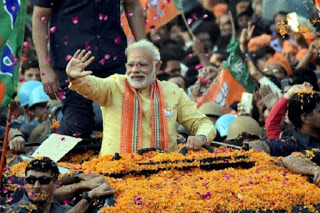
Since assuming office in 2014, the current Prime Minister Narendra Modi has initiated a slew of developmental measures, many of which have been awe-inspiring and motivational, many of which have revealed his statesmanship and integrity. Sometimes, he and his ministers have had to take tough decisions for the sake of the good of the country, often with scant regard to political affiliations and personal ambitions.
In spite of these, rather, becauseof these measures, Modi’s political detractors have formed unholy alliances to oust the incumbent government. His opposition would have us believe that the Modi government is worthless, fascist, intolerant. Since the inception of the Modi government in 2014, the opposition parties have gone on a rabble-rousing spree, as they have attempted to discredit the government with some frivolous charges: the intolerance movement that fizzled out, that the government cannot be run by a chaiwala who is a neech aadmi, ‘shoot-and-scoot’ corruption charges, etc.
What are you and I, the citizens of the land, the voters, to do? Who do we listen to? Whom do we vote for? Why Modi, again? Before we seek answer for these questions, consider this:
Bharata, the legendary son of Shakuntala and Dushyanta was renowned for his strength, valour and righteousness. Legend has it that, during his reign, he conducted 800 Ashwamedha yagnas for the betterment of his subjects: 100 of them on the banks of the Yamuna, 300 on the banks of the Saraswathi, and 400 on the banks of the Ganga. He spared no efforts for the welfare and uplift of his subjects. Such was his sense of integrity that when it came to choosing his successor, he did away with the usual practice of handing over the throne to his next of kin. Instead, he selected Bhumanyu, who was unrelated to him, due to his virtuous qualities of strength, intelligence and compassion. Lest we forget, it is not for nothing that India is named after him: Bharatavarsha.
I am convinced if Bharata were to be come back to visit us today, he would be utterly disappointed with the political state of affairs in our country.
He would, for instance, strongly condemn the fact that a grand old party that ran the government at the centre for over 60 years, has managed to keep the party presidency within one single family – like a piece of family furniture to be handed over from generation to generation.
He would certainly disapprove of the clown prince of the said party, with absolutely zero political credentials, who has the audacity to consider himself a prime ministerial candidate.
He would admonish the so-called erudite intellectuals of the said party of licking the dynasty’s boots. Especially so because like in The Emperor’s New Clothes, the bootlickers refuse to acknowledge that the clown prince is intellectually and politically naked.
He would be disgusted at some regional minsters/politicians whose sons, having tried their hand at acting and playing cricket, and having failed at both, have entered the political arena to cash in on their baap ka raaj .
He would watch in disbelief as at the level of hero-worship and sycophancy of blind followers of corrupt-to-the-core politicians.
He would be disgusted at the level of one-upmanship, muck-raking, backstabbing, name-calling and Machiavellian machinations by opposition members to undermine even well-intentioned government schemes and development measures.
Most of all, Bharata would be utterly disappointed in you and I, his subjects, the citizens of Bharatavarsha, for tolerating these corrupt, vile, self-serving, dynastic opportunists.
Still, are we saying that the Modi government has provided a perfect panacea for all the woes of India? No, certainly not. (I have never supported the beef-ban, for instance.) But there is no doubting the hard work and sincerity behind all the developmental measures undertaken by Modi’s government. And, most significantly, as opposed to the disastrous decade of the accidental prime minister, there has not been a single scam.
One can discern the intent of the political detractors who have formed the alliance to oust Modi: to defeat BJP at any cost and regain control on the riches of the land so that they and their stooges can once again run riot.
Leaving aside the politicians, if one were to peruse the names of the detractors who pour vitriol against the Modi government on social media message boards, it would be clear that they belong to one of the two Abrahamic religions. In all probability, they dislike the fact that a man with Sanatanic Dharmic roots should be the leader of a population that they are fervently hoping would be converted to their own faith.
Therefore, in the absence of any logical reason for the hatred that the detractors have towards Modi, his government, and his developmental measures, I struggle to come up with any other reason than political ambition and religious bias.
The titular question, hence, is a rhetorical one: Why Modi?
Still, if one were to persist, my response to the question would be: Why not Modi?
Is there a better alternative? Somebody who is not a product of a dynasty, sycophancy, or corruption? The changes that Modi has initiated need to continue if they were to bear fruit. If any of his detractors usurps power, he/she will not think twice before reversing these changes and put India back by several decades as the previous government had done. If you have got an equivalent if not better prime ministerial candidate than Modi, please propose his/her name. If you can find somebody as hardworking and with as much rectitude as Modi, please name him/her.
While you scrounge for such a candidate in the current political cauldron bereft of scruples and integrity, I know which button I will be pressing during this Lok Sabha elections: one that will vote Modi back in.
For the sake of the future of Bharatavarsha, I urge you to do the same.
Image source: https://www.indiatvnews.com/elections...
Published on March 03, 2019 22:15
January 28, 2019
Book conversations: Sky-clad
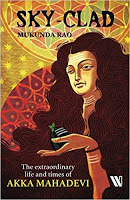 Sky-clad: The Extraordinary Life and Times of Akka Mahadevi
Sky-clad: The Extraordinary Life and Times of Akka MahadeviMukunda Rao
Westland Publications, 2018
Mukunda Rao, author of Between the Serpent and the Rope , presents the extraordinary life-story and message of one of India's most charismatic female saint-poets, Akka Mahadevi.
Apart from Akka, Sky-clad provides the accounts of illustrious female saint-poets of India: Meera, Andal, Lalleshwari, etc. It also provides a historical glimpse of the foundation of Virashaivism by Basaveshwara and the movement's probable guiding force, Allama Prabhu.
This unique form of bhakti movement incorporated the worship of Shiva in an impersonal and/or Linga form, whilst striving against varna/jati restrictions. While Basavanna's personal god was Kudala Sangamadeva, Allama Prabhu's was Guheshwara, and Akka's Chennamallikarjuna - all different manifestations of Lord Shiva. The ultimate goal of these and other sharanas was the same: aikya, anubhaava, sunyata, moksa, nirvana, enlightenment or the natural state.
Rao writes about Akka's early life, her struggle with the unnecessary marital bond that she is forced to accept due to the machinations of a smitten Jain king, Akka's flight from the bondage when her husband is unable to observe her conditions of marriage, her trial at Kalyana by Allama, her spiritual quest, and her attainment of aikya at the Srishaila caves. Sky-clad ends with a collection of Akka's vachanas.
*****
A major part of the book is dedicated to the agony of separation and yearning for ultimate dissolution with the god-principle that is inherent in bhakti philosophy. Even though Akka's nakedness when she exits the marital bond and wanders in search of her istadevata is looked down upon by some of her contemporaneous saint-poets, we find through Rao's writing, that the transcendence of gender limitations and social strictures is a common theme in the writings of even male saint-poets of the time, including Basavanna.
Sex, gender and sexuality are assumed to be fixed. This notion of fixity may pertain to the physical sex, but gender roles and sexual orientation are very fluid and characterized by wide variations in their expression.
Other writers (referenced below) have pointed out that regardless of the physical sex of the vachanakara, in madhurya bhava form of bhakti, the androgynous nature of these saint-poets is evident in their vachanas. Consider these examples from male vachanakaras (ibid.):
When I saw him,I forgot the eight directions, O mother,O mother, motherWhen I got him to speak to meMy entire body broke into sweatWhat next O mother?Today when Mahalinga GajeshwaraIs embracing I have forgottenTo embrace him...What next, O mother?
And:
In my great raptureOf making love with my darlingI can't tell myself from the world.While making love with my darlingI can't tell myself from my darlingAfter making love with UrilingadevaThe god of the burning memberI can't tell whether it is me, himOr something else.
Further, this fusion, confusion and inversion of gender roles is also dramatized in Jayadeva's Gitagovinda in which Radha is shown dominating Krishna (ibid.):
Driven by love's feverRadha rode her loverTrying to dominate him...
This theme is also reflected in female vachanakaras' works: Remavve, the spinner saint-poet is quoted as saying, 'Other husbands are above; Mine, below.' And Akka herself wrote (ibid.):
I will capture The Foe of KamaO BasavaThanks to your graceI will capture The Moon-wearerO BasavaThanks to your graceI will create obstaclesFor the extremely licentious lordChannamallikarjunaAnd mate with himAs if we are not two.
*****
I asked the author about these and other topics of interest covered in Sky-clad. Here are excerpts from the email interview with Mukunda Rao:
1. To begin with, I was a bit unsure of some of the dates mentioned in the book. Firstly, in the introductory pages, the date of Bhagavad Gita is given as 100 CE. Is this the date the Gita was first documented? Because the date of the Mahabharata war has been variously given as 950-3102 BC, and if the Gita is part of Mahabharata, it would be much older than mentioned. Secondly, in page 35, the Aihole temple is credited as the first Jain temple, pre-dating Hindu temples. I am assuming this is only in Karnataka? Because elsewhere in India there have been much older temples dedicated to Hindu deities. Even within the Aihole temple complex, which has Hindu, Buddhist and Jain temples, the date of the Jain Meguti temple is given as 634 CE, whereas the Ravanaphadi cave temple dedicated to Lord Shiva is said to be constructed in 55o CE.
MR: Dates or 'origins' are always controversial. However, the truth of the matter doesn't necessarily get enhanced because it's older. I am not a scholar, nevertheless I do necessary research and try to be careful in what I say. The Mahabharata was in oral form for centuries before it was written down. The time frame traditionalists offer is suspect; Mahabharata, I think happened after the Buddha period, also its composition. Statues, figures and paintings of the Buddha and Mahavira seemed to have appeared centuries before the Hindu temple culture grew and spread widely. Perhaps 'Linga' was much older, not Lord Shiva with a crescent moon in his hair. Anyway, I don't want to hold on to these dates; tomorrow there may be new findings and we stand open to corrections.
2. Regarding Meera's bhakti there is mention of viraha - the pangs of separation, which is expressed in her numerous songs. You have written that in this type of bhakti, the bridge of separation between the devotee and deity is never crossed. However, according to the recorded biography of Meera, she is said to have merged into the image of Lord Krishna in the temple at Dwaraka. Meera's sari is said to have appeared on the Lord's idol, indicating the final union. Can this then be taken as proof of the ultimate dissolution?
MR: It is said even Andal merged with the deity. This only indicates the intensity of their bhakti. Bhakti is relational, thought it has within it the great urge to transcend the duality. Only a few lucky ones cross the bridge. This is not to privilege some bhaktas over others, but only to point out the nature of bhakti and its spiritual consequences. I have tried to follow more their poems rather than legends.
3. In the sections on bhakti, and body and gender, you mention about gender issues and feminine beauty as impediments to spiritual progress. While the Freudian theory of penis-envy has been rejected by later day female psychotherapists, I was wondering if there could be an opposing theory at play in male sharanas who identify their gender as feminine when it comes to expressing bhakti towards the male God. Could the male spiritual aspirants be envious of women's Janani status, and therefore yearn for fulfilment from a higher male power? It is also interesting to note (from the book referenced below) that Maya, the evil that separates the devotee from the deity is mostly construed as female by almost every seeker, but Akka Mahadevi has described it in the masculine gender in one of her verses (ibid.).
MR: You have a point and an interesting one. Sexuality and its experience seem to play a significant role in shaping the language of bhakti. Male bhakta could be envious of female bhakta. Vagina is a receiver, so male bhakta may want to be that receiver receiving love, grace and jnana!
4. We tend to have a hypocritical attitude towards matters of sex, in that we act as though it does not exist, and brush all matters related to sex under the carpet, even though our growing population suggests otherwise. Sex is certainly considered to be an impediment to spiritual progress by almost all religions. In this context, it is very interesting to note the explicitly sexual connotations that are present in Akka Mahadevi and her fellow sharanas/sharanes' poems. Akka talks about going "cuckold my husband with Hara" and "fornicating with Shiva" (ibid.). Are these sexual connotations to be taken literally? Did the bhaktas really aspire to have actual physical contact with their chosen deity? Are the erotic carvings on some of our temple walls giving us a message of some sort, perhaps relating to the importance of sex in spirituality, something that we have failed to realise?
MR: How is actual physical union possible? Only the yearning for union, which is the yearning to transcend duality, is expressed in sexual terms. As I say in the book:
The strong sexual imagery in the last vachana is actually indicative of the deep yearning for mystical union - the expression of this ultimate union, or the great urge to self-transcendence, is in physical terms. The physical becomes the heart and soul of the metaphysical. In the way of bhakti, the poet joins the bodily experience with the transcendental so that the spirit speaks through the flesh. For, the body, as Akka would say, is not only the 'house of passion' but also the 'home' of the Divine. So the physical continues to be the base, even when, at some point during this journey, her Lord Chennamallikarjuna, with 'white teeth' and 'matted curls,' metamorphoses into nirguna, or the aniconic one, who has no attributes; and finally, into the nirakara, one with no name or form.
5. In page 75, you talk about Allama Prabhu, Jiddu Krishnamurti and U G Krishnamurti's pathless path, wherein they reject the notion of accumulation of knowledge and performing sadhana to attain enlightenment. Is there no meaning in seeking guidance from a guru, which is considered to be an essential prerequisite to progress on the spiritual path? How does on conduct oneself in life if one is a spiritual aspirant desirous of attaining enlightenment? Is luck the only factor that results in one progressing from anubhava to anubhaava?
MR: The need for gurus, sadhana and jnana is quite necessary, or at least the necessity is there in every quester's life. We need all these tools when we start the journey, but somewhere along the line, they drop off one by one and one is on one's own. A genuine quester cannot be dependent on a guru forever, and a genuine guru would certainly want to release such people from the circle of his influence. In other words, what we know is that that state of being cannot be brought about by an act of will, or engineered, or replicated, through any method or sadhana whatsoever. At best, sadhana can prepare the ground and yet there is no guarantee. The search cannot bring it on, only the end of search, if at all. But then of course, there has to be a search for it to be abandoned, the search which ceases with the realization that the very search is the barrier. It is the realization of the mind that it cannot solve the problem it has itself created in the first place.
Intense anubhava takes you thus far but no further; for anubhaava to happen we let go all anubhavas! Rest is luck or grace or whatever that is, we have no clue. I called it the 'second missing link,' that which catapults one into the natural state of being.
*****
Rao's account of Akka Mahadevi's life and message is highly recommended reading for spiritual aspirants in general, and for those seeking to know more about one of the most fascinating female saint-poets of India.
Reference:
Androgyny and Female Impersonation in India: Nari Bhav, T. Mukherjee & N.R. Chatterjee, Niyogi Books, First Edition, 2016. Chapter title: The Soul In-Between: Gender, Androgyny and Beyond in Bhakti Poetry, The Example of the Karnataka Veerashaiva Tradition, H.S. Shivaprasad, pp. 71-82.
Image source:
https://www.amazon.in/Sky-clad-Extrao...
Published on January 28, 2019 04:33
January 22, 2019
Book conversations: The Dhoni Touch
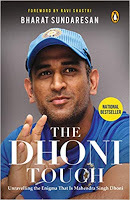 The Dhoni Touch: Unravelling The Enigma That Is Mahendra Singh Dhoni
The Dhoni Touch: Unravelling The Enigma That Is Mahendra Singh DhoniBharat Sundaresan
Penguin Random House India 2018
I had said that Dhoni must be the avatar of Cricketing God after he tormented RCB throughout IPL 2018 - CSK's comeback year.
This book by Bharat Sundaresan tells us exactly why he is that avatar.
While the Dhoni biopic gave us details about his personal and cricketing journey, this book by Sundaresan is less about Dhoni's cricketing acumen and more about him, the person; his enigmatic personality, character and mental state. In effect it is a nice case study of a very different kind of cricketer, one who has given us his own brand of cricket.
However, Dhoni the person, remains elusive throughout the book since he never grants the author the coveted one-on-one interview. Instead, what he grants is access to some of his close confidantes that he has allowed into his inner circle over the years; his bosom pals, army colleague, ad director and selector. Just these, not even his family members. So Sundaresan has the unenviable job of piecing together Dhoni's personality traits from third person accounts, so that a cohesive picture emerges, however incomplete it is due to the non-participation of the man himself.
Nevertheless, what emerges is no less fascinating. We learn that Dhoni is a self-made man, who never really set out to be a cricketer, but excelled in it nonetheless. He is supremely confident in his own abilities and decisions, which he makes with a full sense of personal responsibility.
He keeps thing simple, in the sense that he only controls the controllables, and understands that not everything can be fully achievable. This leaves him free from mental clutter that can cloud his decision making ability. It also helps that Dhoni has an uncanny ability to observe everything and everybody that is in his peripheral vision. Apparently, he can also accurately read situations, and people and their intentions. In that respect, he is an able if unconventional leader of men - a quality that has made him - thus far - India's greatest captain in all formats of the game.
I also gleaned from the book that Dhoni possesses an outgoing and active type of personality, in that he is very much a movement kind of person and is fascinated by motion: that of the body, or anything that moves the body. This might explain his deep interest in football, the rigours and manoeuvres of the army, his lightning quick reflexes behind the stumps, and riding bikes: 'Do you know the feeling of riding at 225 miles an hour and the breeze hitting your chest?' as the man himself asks.
Dhoni also enjoys taking risks, which explains his penchant for leaving the run-chase till the last over when he seals it off with a six over long-on - leaving us breathless and squirming in our seats.
This is not to say that Dhoni is extroverted in any way. Indeed, he is known to be a very private person who is relaxed only with his inner circle of close friends and relatives, and absolutely abhors media interactions.
This is what I have gathered from The Dhoni Touch: even though Dhoni's first love was football, it is hardly surprising that cricket ended up being his prime vocation. Cricket, as we know is a complex, complicated, unpredictable and enigmatic sport, and so, it emerges from this book, is Dhoni's personality - cricket and Dhoni probably attracted each other.
This is implicit in Sundaresan's summing up of the Dhoni personality towards the end of the book:
A man who was not born to be a cricketer but became one.A man who was not born to be a captain but became one.A man who was not born to be a legend but became one.A man who was born to be an enigma and will always remain one.
Let's hope that this enigma will continue to don the India blues for a long time to come and give us many more breathless moments.
Picture source: https://www.amazon.in/Dhoni-Touch-Unr...
Published on January 22, 2019 23:33



